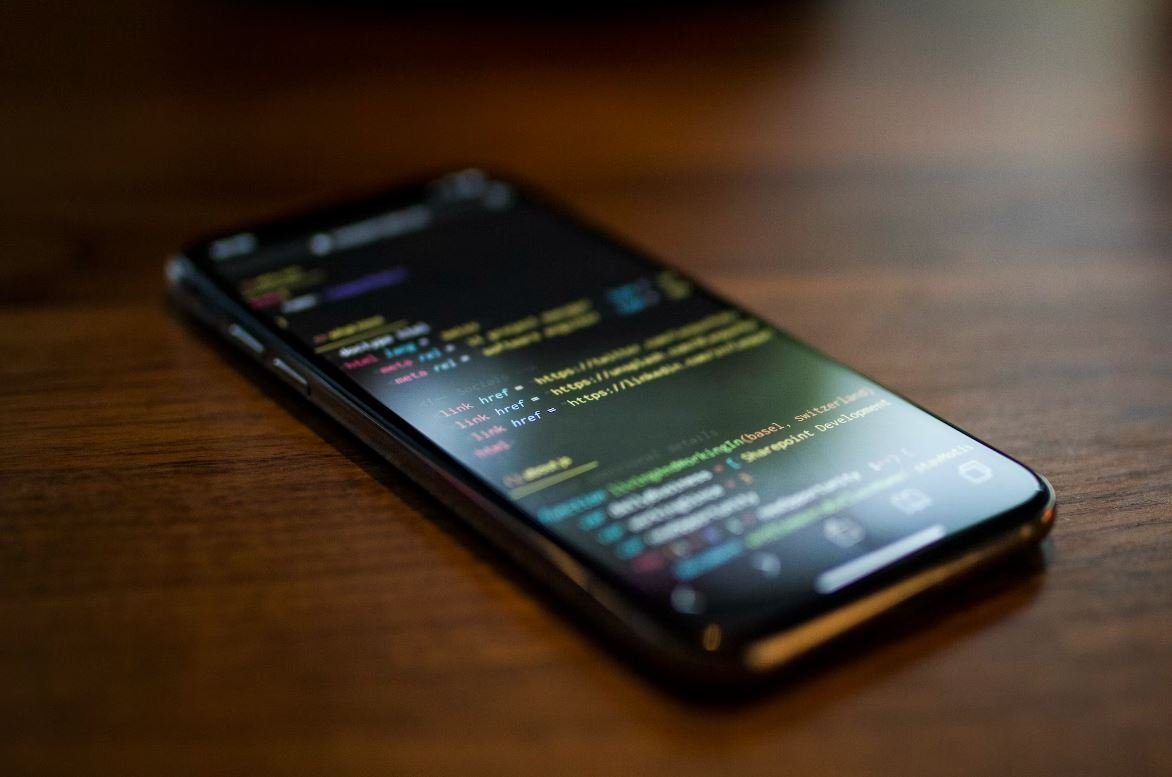Why Is Deepfake Good?
Deepfake technology has gained significant attention in recent years, sparking both curiosity and concerns among the public. While there are legitimate concerns about the misuse of deepfake technology, it’s important to recognize that there are also potential positive applications. In this article, we will explore some of the reasons why deepfakes can be beneficial.
Key Takeaways:
- Deepfake technology has several positive applications, including entertainment, education, and creative expression.
- Deepfakes can be used to create realistic simulations and visualizations, aiding in research and development.
- Regulation and awareness are essential to ensuring the responsible and ethical use of deepfake technology.
The Positive Potential of Deepfake Technology
While deepfakes have been controversial due to their ability to create convincing fake videos and images, there are several areas where this technology can be harnessed for good. One of the primary uses is in the realm of entertainment, where deepfakes can be utilized to recreate historical events or bring beloved characters back to life for fans. *Imagine watching Marilyn Monroe sing alongside Beyoncé or seeing a young Michael Jackson perform on stage today.*
Moreover, deepfakes have a significant role to play in education and training. Using this technology, educators can create virtual simulations that allow students to interact with historical figures or explore realistic scenarios. This immersive experience enhances learning outcomes and provides a unique way of understanding complex subjects. *Instead of just reading about the Roman Empire, students can virtually talk to Julius Caesar or witness the grandeur of the Colosseum.*
Applications in Research and Development
The potential benefits of deepfake technology extend beyond the realms of entertainment and education. Researchers and developers can leverage deepfakes to simulate realistic scenarios for testing and experimentation. For example, in the field of autonomous vehicles, deepfake simulations can emulate various driving conditions without the need for costly and time-consuming physical tests. *By creating a virtual New York City, self-driving car algorithms can be safely fine-tuned and optimized.*
Additionally, deepfake technology offers a powerful tool for visualizations and predicting outcomes. By feeding large datasets into deep learning algorithms, patterns and correlations can be identified, leading to more accurate predictions. This can be particularly valuable in areas such as weather forecasting, disease spread modeling, and financial market analyses, where accurate predictions are crucial in making informed decisions. *Using deepfake-generated visualizations, we can better understand the potential impact of climate change or the spread of infectious diseases.*
Regulating Deepfake Technology
With the increasing prevalence of deepfake technology, it is vital to establish appropriate regulations and guidelines to ensure its responsible and ethical use. Awareness campaigns can help educate the public on the potential risks and challenges associated with deepfakes, mitigating the potential for misuse. *By ensuring ethical standards are upheld, we can prevent the harmful consequences of misinformation and protect individuals from malicious intent.*
Moreover, it is crucial to engage with technology developers, researchers, and policymakers to discuss potential ethics codes and guidelines specifically tailored to deepfake technology. Creating a framework that promotes transparency, consent, and accountability will enable the ethical deployment of deepfakes while minimizing harm. *By actively involving various stakeholders, we can foster a collective responsibility and ensure that the positive potential of deepfake technology continues to be realized.*
| Use Case | Potential Benefits |
|---|---|
| Entertainment | Recreating historical events and bringing deceased artists to new audiences. |
| Education | Creating immersive learning experiences and virtual interactions with historical figures. |
| Research and Development | Cost-effective simulations for testing and development in various fields. |
Deepfake technology has both positive and negative implications, but through responsible use and regulation, its benefits can be harnessed in various domains. Whether it’s breathing life into long-gone artists or providing valuable insights into scientific research, the potential of deepfakes is immense. By embracing these possibilities while also addressing concerns, we can find a balance that allows us to utilize this technology for the greater good.
| Field | Applicable Deepfake Use |
|---|---|
| Autonomous Vehicles | Simulating realistic driving conditions for algorithm testing and optimization without physical tests. |
| Predictive Analytics | Identifying patterns and correlations in large datasets to improve accuracy in weather forecasting, disease spread modeling, and financial market analyses. |
| Visualizations | Creating realistic visual representations to aid in understanding and decision-making across various fields. |
In conclusion, while deepfake technology presents legitimate concerns about its potential misuse, it also offers several significant benefits. From enhancing entertainment experiences to revolutionizing education and assisting research and development, deepfakes have the power to transform numerous aspects of our lives. By recognizing these positive applications and working together to establish responsible regulations, we can embrace the potential of deepfake technology while minimizing its risks.

Common Misconceptions
Misconception 1: Deepfake technology is only used for malicious purposes
One common misconception people have about deepfake technology is that it is primarily used for unethical and harmful purposes, such as spreading fake news or creating non-consensual explicit content. However, it is important to note that deepfakes have potential benefits and positive applications as well.
- Deepfake technology can be utilized in the entertainment industry for creating realistic and seamless visual effects in movies and video games.
- It can also be used for educational purposes, allowing historians and scholars to bring historical figures back to life and make history more engaging and interactive.
- Deepfakes can be used in the field of medicine for simulating surgeries and training medical professionals without relying on real patients.
Misconception 2: Deepfakes are always indistinguishable from real videos
Another misconception is that all deepfakes are perfectly generated and cannot be discerned from real videos. While it is true that deepfake technology has become increasingly sophisticated, there are usually subtle cues that can help identify a deepfake.
- Blurring around the edges of the face or body may be a sign of a deepfake as the algorithm struggles to blend the edited content seamlessly.
- Suspicious eye movement or lack of blinking in a video could indicate a deepfake since generating accurate eye motions is challenging for the algorithm.
- Oftentimes, the lighting, shadows, or reflections in deepfake footage may not align with the environment or other objects, giving away the manipulation.
Misconception 3: Deepfake technology will make it impossible to trust any video
Some people fear that deepfake technology will erode trust in videos to such an extent that we won’t be able to believe anything we see. While it is true that advancements in deepfakes will require us to be more cautious about the authenticity of videos, it does not mean we will completely lose trust in the medium.
- Countermeasures and advanced algorithms are being developed to detect deepfakes and differentiate them from genuine videos, helping to verify the accuracy of visual content.
- Increased awareness about deepfakes and their implications will lead to improved media literacy and critical thinking skills among people, enabling them to scrutinize videos more effectively.
- Legislation and regulations can be implemented to deter the malicious use of deepfakes, ensuring that consequences are faced by those who intentionally deceive others.
Misconception 4: Deepfakes are only a recent phenomenon
While deepfake technology gained widespread attention in recent years, it is not a completely new concept. The development of deepfakes can be traced back to the early 2000s and has evolved over time. This misconception arises due to the sudden increase in media coverage and public awareness about deepfakes.
- Early iterations of deepfake-like technologies were used in the visual effects industry for creating stunning transformations in movies, long before they became accessible to the general public.
- The advent of deep learning and artificial intelligence has significantly improved the quality and accessibility of deepfake technology, bringing it into the mainstream in the past decade.
- As deepfake technology continues to advance, it is crucial to acknowledge its historical origins and evolution to better understand its current impact and future implications.
Misconception 5: Deepfake technology is beyond control and cannot be regulated
Some people believe that deepfake technology is unstoppable, making it impossible to regulate or control its usage. While it is true that deepfakes pose challenges in terms of regulation, there are steps that can be taken to mitigate their negative consequences.
- Collaborations between tech companies, academia, and law enforcement agencies can help develop effective detection techniques and tools for identifying deepfakes.
- Creating and implementing strong ethical guidelines and industry standards can discourage the creation and distribution of malicious deepfakes.
- Educating the public about the potential risks and implications of deepfakes can empower individuals to adopt cautious behavior and become more resilient to the effects of fake content.

Deepfake Technology and Its Potential Benefits in Various Fields
The article explores the potential benefits of deepfake technology in various industries and fields. The tables below provide informative data and insights related to each respective topic.
Enhancing Film and Television Production
This table showcases the improvement in film and television production made possible by deepfake technology. It highlights the use of deepfakes for character replacements, scene enhancements, and visual effects.
| | Deepfake Technology Improvements |
|—|———————————|
| 1 | Seamless character replacements |
| 2 | Realistic scene enhancements |
| 3 | Dynamic visual effects |
Revolutionizing Advertising
In the advertising industry, deepfake technology has the potential to revolutionize the way brands reach their target audience. The table below highlights key benefits, such as enhanced personalization and interactive marketing campaigns.
| | Deepfake Advantages in Advertising |
|—|———————————–|
| 1 | Personalized brand experiences |
| 2 | Interactive marketing campaigns |
| 3 | Targeted storytelling |
Improving Medical Training and Research
Deepfake technology has the potential to improve medical training and research by providing realistic simulations and enhancing data analysis capabilities. The following table demonstrates how deepfakes can contribute to this field.
| | Deepfake Contributions in Medical Field |
|—|—————————————-|
| 1 | Realistic medical simulations |
| 2 | Accurate data analysis |
| 3 | Improved surgical training |
Empowering Historical Preservation
Deepfake technology holds great promise in preserving cultural heritage and historical events. The next table illustrates some of the ways deepfakes can empower historical preservation efforts.
| | Deepfake Applications in Historical Preservation |
|—|————————————————–|
| 1 | Restoration of ancient artifacts |
| 2 | Recreation of lost or damaged historical events |
| 3 | Immersive historical experiences |
Enhancing Gaming and Virtual Reality
The gaming and virtual reality industries can greatly benefit from deepfake technology. The following table explores some of the ways it can enhance gaming experiences and virtual reality simulations.
| | Deepfake Possibilities in Gaming and VR |
|—|—————————————–|
| 1 | Realistic character animations |
| 2 | Dynamic facial expressions |
| 3 | Immersive virtual environments |
Transforming Education and E-Learning
Deepfake technology has the potential to transform education and e-learning by offering engaging and interactive content. The table below highlights some of the key benefits of utilizing deepfakes in educational settings.
| | Deepfake Benefits in Education |
|—|——————————-|
| 1 | Interactive learning |
| 2 | Historical reenactments |
| 3 | Virtual lectures |
Improving Criminal Investigations
The use of deepfake technology in criminal investigations can significantly enhance forensic analysis and help solve complex cases. The table below showcases the potential impact of deepfakes in this field.
| | Deepfake Contributions in Criminal Investigations |
|—|————————————————–|
| 1 | Facial recognition and identification |
| 2 | Scene reconstructions and simulations |
| 3 | Witness protection and anonymity |
Advancing Social and Environmental Studies
In the realm of social and environmental studies, deepfake technology offers new possibilities for analyzing and understanding data. The table below highlights the potential advancements that can be achieved using deepfakes.
| | Deepfake Advancements in Social and Environmental Studies |
|—|———————————————————-|
| 1 | Behavioral analysis and predictions |
| 2 | Environmental simulations and impact assessments |
| 3 | Preservation of disappearing cultures |
Empowering Virtual Assistants
Virtual assistants play an essential role in our daily lives, and deepfake technology can enhance their capabilities even further. The final table presents the potential applications of deepfakes in virtual assistants.
| | Deepfake Applications in Virtual Assistants |
|—|——————————————–|
| 1 | Natural and personalized interactions |
| 2 | Multilingual speech synthesis |
| 3 | Facial recognition for enhanced security |
In conclusion, deepfake technology has significant potential in various fields, including film and television production, advertising, medical training and research, historical preservation, gaming and virtual reality, education, criminal investigations, social and environmental studies, and virtual assistants. By leveraging deepfakes responsibly, these industries can benefit from enhanced experiences, improved data analysis, and innovative solutions to complex problems. It is important to explore and mitigate any potential risks associated with deepfake technology while embracing its positive impact on transforming various sectors.
Frequently Asked Questions
What is deepfake technology?
Deepfake technology refers to the use of artificial intelligence (AI) and machine learning techniques to create highly convincing manipulated audio, video, or images that appear to be real but are actually synthetic or altered.
How does deepfake technology work?
Deepfake technology typically involves training a deep neural network on a large dataset of real faces, voices, or other visual/audio content, and then using this model to generate new content by altering or combining existing elements.
What are the potential benefits of deepfakes?
Deepfakes can have positive applications in various industries such as entertainment, gaming, advertising, and education. They can be used to create lifelike virtual characters, enhance visual effects in movies, create personalized marketing content, and provide immersive educational experiences, among other things.
Can deepfakes be used for educational purposes?
Yes, deepfakes can be leveraged for educational purposes. For example, they can be used to create realistic historical reenactments, simulate scientific experiments, or provide interactive language learning experiences, all of which can enhance the effectiveness of education and training.
Are there any potential advantages in the entertainment industry?
Deepfakes offer opportunities for the entertainment industry to push the boundaries of storytelling and filmmaking. They can be used to seamlessly incorporate actors into scenes they weren’t physically present for, bring deceased actors back to the screen, or create visually stunning effects that were previously impossible.
What impact can deepfakes have on digital art?
Deepfake technology presents new creative possibilities for digital artists. They can use deepfakes to generate unique and imaginative visuals, combine multiple artistic styles, or even create interactive art installations that respond to viewer input and engagement.
Can deepfakes enhance accessibility?
Deepfakes can play a significant role in enhancing accessibility for individuals with disabilities. By generating synthetic sign language interpretation, providing visually impaired individuals with realistic audio descriptions, or enabling real-time translations, deepfakes can help bridge communication gaps and provide equal access to information and entertainment.
Are there privacy concerns associated with deepfakes?
Yes, deepfakes raise concerns about the potential misuse of this technology for malicious purposes, such as spreading misinformation, impersonating individuals, or creating non-consensual explicit content. Safeguards and regulations need to be in place to protect against these risks.
Can deepfakes be used for research and development?
Deepfake technology can be a valuable tool for research and development in fields such as computer vision, pattern recognition, and human-computer interaction. By exploring the capabilities and limitations of deepfakes, researchers can advance the state of the art and develop improved algorithms and techniques.
What ethical considerations should be taken into account with deepfakes?
Deepfakes raise important ethical questions, including consent, transparency, and potential harm. It is crucial for individuals, organizations, and policymakers to engage in responsible and ethical use of deepfake technology, ensuring they are used in ways that respect privacy, rights, and the well-being of all individuals involved.




